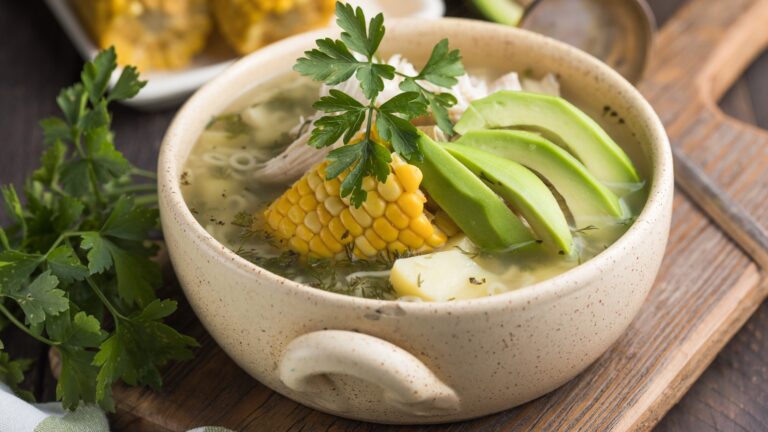Empanadas are more than just a delightful culinary treat; they are a cultural symbol deeply embedded in the traditions of many societies around the world. From vibrant festivals and celebrations to the pages of literature and the screens of movies, empanadas have made their mark as a beloved food with a rich heritage.

This article delves into the empanada cultural significance, highlighting their presence in festivals, literature, media, and family traditions, enriched with insights from renowned empanada chefs and experts.
Empanadas in Festivals and Celebrations
Empanadas are often at the heart of many festivals and celebrations, serving as a unifying dish that brings people together.

Latin American Festivals
In Latin America, empanadas are a staple at numerous festivals. In Argentina, for instance, the “Fiesta Nacional de la Empanada” in Famaillá celebrates this iconic dish with competitions, tastings, and cultural performances. The event attracts thousands of visitors who come to enjoy the diverse array of empanadas, each with its unique twist.
Similarly, in Chile, empanadas are a key feature during the Fiestas Patrias, a celebration of the country’s independence, where families and friends gather to enjoy this savory pastry. The Chilean empanada, often filled with pino (a mixture of beef, onions, olives, and hard-boiled eggs), is a beloved part of the festivities, symbolizing national pride and unity.

Other Celebrations
Empanadas also play a significant role in various other celebrations across the globe. In Spain, the Galician empanada is a highlight during regional festivals such as the “Festa do Marisco,” celebrating the seafood bounty of the region. These empanadas, typically filled with fish or seafood, showcase the local ingredients and culinary traditions.
In the Philippines, the empanada is a favorite during fiestas and Christmas celebrations, reflecting the country’s Spanish colonial history and its influence on Filipino cuisine. The Filipino empanada, often filled with sweet and savory ingredients like chicken, potatoes, and raisins, is a staple at family gatherings and holiday feasts, bringing joy and warmth to the celebrations.

Empanadas in Literature and Media
Empanadas have found their way into the creative expressions of literature and media, showcasing their cultural importance and universal appeal.
Books Featuring Empanadas
Literature often mirrors the cultural values and traditions of a society. Empanadas have been featured in numerous books, both in fiction and non-fiction. In “Like Water for Chocolate” by Laura Esquivel, food plays a central role in the narrative, with empanadas symbolizing love and passion.
The novel’s magical realism and evocative descriptions of food highlight the deep connection between culinary traditions and emotions. Cookbooks like “The South American Table” by Maria Baez Kijac include recipes and stories that highlight the importance of empanadas in South American culture. These books not only provide recipes but also delve into the history and significance of empanadas, making them an integral part of the culinary literature.

Movies and TV Shows

Empanadas also appear in various movies and TV shows, often symbolizing comfort and home. In the animated film “Coco,” the Mexican tradition of family and food is beautifully depicted, with empanadas making a heartwarming appearance. The film emphasizes the importance of family and tradition, with food serving as a bridge between generations.
TV shows like “Jane the Virgin” and “Ugly Betty” showcase the cultural significance of empanadas within Latin American families living in the United States, bridging cultural gaps and fostering a sense of community. These portrayals highlight how food, and empanadas in particular, can serve as a cultural touchstone, connecting characters to their heritage and family values.
The Role of Empanadas in Family Traditions
Empanadas are more than just a dish; they are a cherished part of family traditions, passed down through generations.
Family Recipes
Every family has its own unique empanada recipe, often guarded and cherished as a family secret. These recipes reflect the diversity of ingredients and techniques used in different regions. From the spiced beef empanadas of Argentina to the seafood-filled empanadas of Galicia, these family recipes are a testament to the rich culinary heritage and regional variations of this beloved dish. Each family adds its own twist, be it a secret spice blend or a unique filling, making their empanadas a true reflection of their culinary identity.

Passing Down Traditions
The tradition of making empanadas is often passed down from one generation to the next, serving as a bonding activity for families. In many households, grandparents teach their grandchildren how to make empanadas, ensuring that the culinary legacy continues.

This practice not only preserves the recipes but also fosters a sense of cultural identity and continuity. The process of making empanadas together creates lasting memories and strengthens family bonds, as each generation learns the stories and techniques that have been handed down over the years.
Interviews with Empanada Chefs and Experts
To gain deeper insights into the cultural significance of empanadas, we spoke with renowned chefs and culinary experts who specialize in this beloved dish.
Chef Interviews
Chef Ana Ortiz, a celebrated empanada chef from Buenos Aires, shares her perspective on the cultural importance of empanadas. “Empanadas are a symbol of our heritage and culinary artistry,” she says. “Each empanada tells a story, from the choice of ingredients to the techniques used in making them.

They bring people together and are an integral part of our celebrations.” Chef Ortiz emphasizes that the process of making empanadas, from rolling the dough to choosing the fillings, is a labor of love that reflects the cook’s passion and creativity.
Expert Insights
Dr. Miguel Sanchez, a food historian, highlights the historical context of empanadas. “Empanadas have a rich history that dates back to the Iberian Peninsula and later spread to Latin America through Spanish colonization,” he explains.
“Their adaptability and regional variations reflect the cultural exchanges and influences over centuries.” Dr. Sanchez points out that empanadas were originally portable meals for workers and travelers, which explains their widespread popularity and diverse regional adaptations. Today, empanadas continue to evolve, incorporating new ingredients and culinary trends while maintaining their traditional roots.

FAQs
Conclusion
Empanadas are a testament to the rich cultural tapestry of the regions they come from. Their presence in festivals, literature, media, and family traditions underscores their importance as more than just a culinary delight.
By exploring the cultural significance of empanadas and gaining insights from chefs and experts, we appreciate not only the flavors but also the stories and traditions that make empanadas a beloved dish around the world.
Disclosure: Our blog contains affiliate links to products. We may receive a commission for purchases made through these links. However, this does not impact our reviews and comparisons. We try our best to keep things fair and balanced, in order to help you make the best choice for you.








One Comment